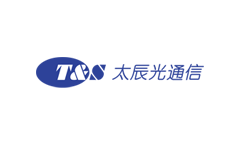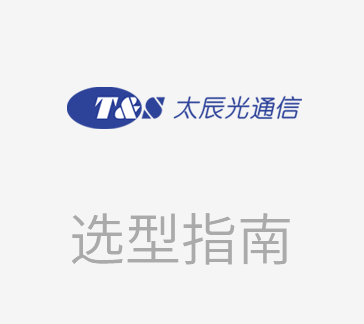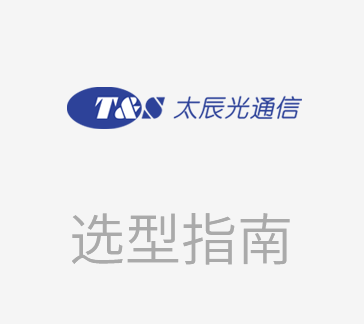End-Face Cleaning is Crucial to Network Performance




NTT conducted a study a few years ago to examine the reasons why networks failed. As a result, 80% of network owners and 98% of installers said that fiber connector contamination was the main reason for network failure.
Cisco states that "even microscopic dust particles can cause a variety of problems for optical connections" and that "any contamination in the fiber connection can cause the failure of the component or failure of the whole system"
Similarly, a white paper on the "Root Reasons for Packet Corruption" said that connection contamination contributes between 17% and 57% to packet corruption.
The information shown above more than just confirms what every installer already knows—namely, the necessity of cleaning the connector end face—but it also serves as validation of the fight that everyone is aware of—the desire to achieve clean connectivity.
We won't experience any problems transferring the light from one location to another when the connector end face is spotless. The amount of light being transmitted will be affected by the presence of dirt or any other particle that can cause contamination on the end face of our connectors, leading to a deterioration of the signal or even a complete link failure, which will be discernible by the presence of high levels of back reflection and insertion loss.
Imagine what would happen to a single-mode fiber if a 9-micrometer particle was present; it could block the entire fiber core. A 1-micrometer particle can block up to 1 percent of the light, creating 0.05 dB loss".
We can identify a variety of causes of contamination, including:
Dust and dirt. Where such particles may be carried by air or the environment in which we are operating and contaminate the end face.
Dirty test instruments and devices. Assume you are cleaning your connector while working on the field with a scope that hasn't been properly maintained; you will be adding extra impurities to the connector.
Residual contamination may happen when handling a product, such as skin oil and hand lotion. When adding solutions to clean the ferrule, ferrule cleaners often fail to completely remove any residues.
Dust cap. Although the name suggests that they can keep dust from coming into touch with the connector end face, depending on how they are handled and how the dust caps are made, even tiny plastic particles can become lodged within the cap, making them operate in the opposite manner. Dust caps are only useful at preventing scratches; they do not effectively block the end face from being polluted. Off-gassing from the dust caps is a different kind of pollution. Because of the polymers' high quality, gases may be released and "condensate" and dry on the end face of the ferrule during transportation or storage after exposure to temperature and time, leaving behind residues that will impact the performance of the connector.
Lastly, skiving, a different source of pollution brought on by the dust cap, is also present. A little amount of plastic will be taken from the interior of the dust cap as a result of friction between the ceramic of the ferrule and the plastic of the dust cap, creating debris that will become stuck to the end face.
Both light scattering and irreversible ferrule damage are potential effects of such impurities on the connector end face. Strong back reflections and attenuation are signs of light dispersion, whereas pits and scratches on the connector end face are indicators of irreversible damage.
Light scattering and lasting damage have their origins in the connection mating process.
Migration of particles. The transmission of light will be impacted by this primary cause. When the connection is disconnected and replugged, Particles might travel from a position where they're not a concern to one where they are." JDSU further states that "Each time the connectors are mated, particles surrounding the core are dislodged, causing them to migrate and disseminate throughout the fiber surface."
Air gaps or alignment. Large particles may form barriers or air gaps that inhibit direct contact between the ferrules, according to JDSU.
Multiplexing of particles. According to JDSU, particles large than 5 microns have a tendency to burst and multiply upon mating. This will result in the development of smaller particles that may create further problems, such as irreversible damage to the end face in addition to light obstruction. Now that we are aware of the sources of contamination and how they affect the connector end face, let's examine the most prevalent standard that is mentioned whenever we discuss the inspection of the end face—IEC 61300-3-35.
The current standard, which dates from June 2015 and describes itself as "Methods for measuring the end-face quality of a polished fiber optic connection," is the second edition. It is crucial to note that the process for the standard emphasizes that "Cleanliness inspection should be conducted prior to the examination of the polished end faces". However, it's critical to note that while IEC is a useful resource for end-face analysis, it is not a standard for end-face cleaning.
The core, cladding, epoxy ring, and contact are the four regions that the IEC specifies should be examined for the end-face examination. Important to note: According to the fiber type, SMF, and MMF, the size of the sections may change.
Yet, only a small portion of the overall ferrule area is included within zones A through D.
Consider an LC connection with a 1.25 mm diameter. The zones A through D described by IEC account for just 4% of the total ferrule diameter, leaving 96% of the region unaddressed by the standard, which we will refer to as "zone X."
In addition, IEC intends to remove zones C and D from the standard in the next versions. As a result, in the same LC example, we will no longer be examining more than 1% of the entire ferrule area, but rather 99% of it, which means that 99% of the ferrule will remain unattended.
This will change since the existing standard only mentions zone A and B for testing for multifiber goods contained in rectangular ferrules, which relates to MPO connectors.
With this change, there will be an increased risk of particle migration and spreading, which, as we have seen, is one of the root causes for light scattering; and unfortunately, even when scopes still will be able to show how clean our end face is within the zones defined by IEC, they will not show us what happens in the "zone X".
We can all conclude from all of this that while executing any installation in the data center, clean connections are essential.
Drying Cleaning. Cleaning pens or clickers are tools used to clean connector end faces by wiping them on dry cleaning cloths. Patch panels and ports will mostly be cleaned using clickers, however dry cleaning will undoubtedly fail if there are impurities like grease or oil present.
Wet/Wet-to-dry cleaning. This happens when the connector end face is wiped against a wet surface while using a solvent, and then the excess solvent is wiped off onto a dry location. The connection ferrule may get contaminated by static charges if this process is not carried out properly or the wrong materials are used.
These techniques will evaluate the zones specified by IEC and are very helpful while cleaning in the field. In "zone X," there will still be little to no cleaning, which might cause debris to move into other zones, particles to multiply, and performance problems. The reality is that there is no practical way to reach a perfectly clean connection in the field. As was already indicated, even scopes can introduce and transport tiny grit and particles onto the connector end face, causing your connection to fail to satisfy link-loss criteria.
In conclusion, cleaning is crucial since contamination of the connection end face is the major reason for connectivity-related network problems. Contaminants on the connector end face will directly affect how well the connection performs, resulting in signal deterioration that will be noticeable owing to the presence of high insertion loss and back reflection, as well as the possibility of inflicting irreversible damage to the end face.
- |
- +1 赞 0
- 收藏
- 评论 0
本文由出山转载自T&S News,原文标题为:End-Face Cleaning is Crucial to Network Performance,本站所有转载文章系出于传递更多信息之目的,且明确注明来源,不希望被转载的媒体或个人可与我们联系,我们将立即进行删除处理。
相关推荐
Introduction of the Fiber Loss Budget Standard
According to the TIA-568 standard, the transmission attenuation of 850nm over OM4 fiber is 3.5 dB/km. Based on the distance of the link, we can calculate the standard loss of 0.4dB.
Five Tests to Ensure the Fiber Patch Cord Quality
The quality of fiber patch cords affects the entire fiber-optic link. Each fiber patch cord must be strictly tested before leaving the factory. So what tests will a fiber patch cord manufacturer do to ensure the high quality of patch cords?
Classification and Typical Application of Fiber Optic Connectors
As a transmission medium, optical fiber will inevitably produce various connections when it reaches the terminal. The research, development, and application of fiber optic connector came into being to ensure the reliable connection between optical fibers.
太辰光(T&S)光纤连接器选型指南
目录- 公司简介 Company profile 陶瓷插芯 Ceramic Ferrule 光纤连接器 Fiber Optic Cable Assembly 光纤元器件 Fiber Optic Components 波分复用器 WDM FBT光纤耦合器 FBT Coupler PLC分路器 PLC Splitter 光纤光栅 Fiber Bragg Grating 光纤模块、有源光缆及有源电缆 Fiber Optic Transceivers,AOC&DAC
型号- FOT-SC/APC,CG-XX/G652D/1.5M,D12F-SC/UPC/SM/∅0.9/L/L1M,SMC-P-1X2-163/15-10/90-FC/APC-1-G652D-∅3X60,FEN-SC-S4,FEN-SC-S5,MC-FC/APC-FC/UPC/SM/∅3/L,FEN-SC-S1,PM-FC/UPC(N)-FC/UPC(N)/1550/∅2/L-SA,FEN-SC-S2,FEN-SC-S3,ATIL-FC/APC/SM/05/NP/L,MPO/APC/12F-FC/UPC/SM/∅0.9-L/L1-RJ,PLC-1X8-A-09/L1-LC/UPC-09/L2-LC/UPC
太辰光(T&S)光纤通信产品选型指南
目录- 公司简介 陶瓷插芯 常规光纤连接器 IEC分级跳线 MPO/MTP多芯连接器 机箱和模块盒 标准测试线 保偏光纤连接器 光收发组件 高速光模块/AOC线缆连接方案 光纤回路器/衰减器 连接头/适配器/终端器 熔融拉锥耦合器和PLC光分路器 波分复用器 光模块及有源光缆 高速线缆 光纤光栅
型号- TSSLS-NCNEE3C,400G QSFP-DD TO 4X100G QSFP56 AOC,200G QSFP56 SR4,400G QSFP-DD TO 8X50G SFP56 DAC,TSSLS-NXXCE3T,TSQM4-NAAJB1C,TSQS-PC40G-XXM,TSD4Q-85M-XXXC,TS-RD1,TS-RD1-1U,TSD8S-85M-XXXC,TSQSQ-85G-XXXC,TSQ45-85G-XXXC,TSQM4-NAAJB1T,TS-FD2,TSSLS-NXXCE3C,TS-FD1-1U,TS-FD1,40G QSFP+TO 4X10G SFP+DAC,PD2-6M,TSSLS-NCNEH8C,40G QSFP+ TO 4X10G SFP+ AOC,TSQS-PC56G-XXM,FEN-LH-SMA,TS-FD2 SERIES,56G QSFP+DAC,40G QSFP+ ER4,TSQD-PC4HG-XXM,200G QSFP56 AOC,10G SFP+ ZR,FEN-LH-LC,100G QSFP28 PSM4,TSSLS-CXXEE3C,25G SFP28 SR,TSSLS-NAACBIT,TSSLS-NAAEAIT,TSQDQ-4PC1HG-XXM,100G QSFP28 AOC,TSSLS-NAACB1C,TSSLS-NAAEA1C,FEN-LH-SDL,10G SFP+ DWDM,MD2-1M24L,TSQL4-E11GH7C,TSQSS-PC2HG-XXM,TSQL4-F22JH4C,FES-LC-PA,25G SFP28 DAC,25G SFP28 CWDM,400G QSFP-DD DAC,400G QSFP-DD DR4,TSSLS-NCNCE3C,400G QSFP-DD TO 2X200G QSFP56 DAC,MD1-3M24L,TSSP-PC25G-XXM,TSD2Q-85L-XXXC,200G QSFP56 TO 4X50G SFP56 AOC,56G QSFP+ AOC,TSSP-PC56G-XXM,TSQS-PC2HG-XXM,100G QSFP28 SR4,10G SFP+ LR,TSQM4-NCNJC3C,TSQSS-PC1HG-XXM,TS-RD1 SERIES,TSSSS-85H-XXXC,TSQDQ-2PC2HG-XXM,50G SFP56 AOC,40G QSFP+ DAC,TS-FD1 SERIES,TSQSQ-85H-XXXC,TSQM4-NAALAIC,FEN-SC-FUNNEL-1,PD2-24L,FEN-SC-FUNNEL-2,TSQM4-NAAGB1C,TSQM4-NAAGBIT,TSSSS-85E-XXXC,40G QSFP+ LR4,TSSLS-CXXCE3C,FES-SC-PA,TSQS-PC1HG-XXM,200G QSFP-DD TO 2X100G QSFP28 AOC,100G QSFP28 TO 2X50G QSFP28 AOC,TSSLS-DXXEE4C,10G SFP+ DAC,25G SFP28 BIDI,TSSLS-NCNEE3T,100G QSFP28 LR4,TSQ4S-85L-XXXC,TSQSQ-85L-XXXC,100G QSFP28 DAC,TSDM4-NCNMC3C,25G SFP28 ER,10G SFP+ AOC,10G SFP+ BIDI,400G QSFP-DD TO 8X50G SFP56 AOC,800G QSFP-DD AOC,TSQM4-NCNGC3C,TSDR8-NAAMATC,TS-FD2-2U,10G SFP+ CWDM,10G SFP+SR,FEN-LC-2,25G SFP28 DWDM,TSSSS-85C-XXXC,TSDSD-85N-XXXC,100G QSFP28 TO 4X25G SFP28 AOC,TSQDS-8PC50G-XXM,800G QSFP-DD SR8,10G SFP+ ER,200G QSFP56 DAC,100G SFP-DD AOC,TSSLS-DXXCK8C,TSQ2Q-85J-XXXC,TSSLS-NCNCE3T,TSQSQ-PC2HG-XXM,TSD2Q-85M-XXXC,FEN-LH-SC,TSSLS-NXXEE3T,200G QSFP56 FR4,40G QSFP+ AOC,50G SFP56 DAC,100G QSFP28 TO 4X25G SFP28 DAC,100G QSFP28 ER4,FEN-SC-1,TSDSD-85M-XXXC,400G QSFP-DD FR4,TSDL4-E11MD3C,100G QSFP28 CWDM4,TSSLS-NXXEE3C,25G SFP28 LR,40G QSFP+PSM4,TSQL4-F22JE3C,400G QSFP-DD TO 2X200G QSFP56 AOC,TSTST-85K-XXXC,400G QSFP-DD AOC,TSQSQ-85J-XXXC,TSQ4S-85J-XXXC,TSD85-85L-XXXC,TSQL4-E11JE3C,TSDR8-NAANA1C,TSSLS-NCNCKBC,200G QSFP56 TO 4X50G SFP56 DAC,TSQL4-E11LD3C,400G QSFP-DD TO 4X100G QSFP56 DAC,200G QSFP-DD TO 8X25G SFP28 AOC,TSSLS-NCNCH4C,MD1-2M6M,200G QSFP56 TO 2X100G QSFP56 DAC,25G SFP28 AOC,PD1-24L,TSQL4-E11GE3C,400G QSFP-DD SR8,40G QSFP+SR4,TSQSS-PC40G-XXM,TSSLS-DXXCH4C,TSSP-PC192-XXM
环回(MTP/MPO/SC/LC)带外壳和拉环的MTP环回
描述- 本文介绍了Loopback(环回)连接器,这是一种用于测试网络设备传输能力和接收灵敏度的双工或多光纤连接器。它适用于系统环回测试和光纤环回测试,具有低插入损耗、高回波损耗和高精度等特点,适用于40G/100G通信网络。
T&S Released a MDC Interface 25G SFP28 Transceiver
US CONEC MDC connector is a VSFF duplex optical connector. T&S created a 25G SFP28 optical transceiver with a MDC Interface, offering a new alternative for your cabling projects in data center scenario.
How to Use Bare Fiber Adapters?
A bare fiber optic adapter is a medium for connecting bare fibers to fiber optic equipment. One side of the adapter is used to connect bare fibers, and the other side is a fiber connector.
LC Duplex Fiber Optic Connectors for High Density Environments with the Features of High-reliability, Low-cost And High-density
With the rapid application of 5G, how to provide a high-density, low-cost, easy-to-manage, and high-reliability network cabling system for data centers has become an increasingly important requirement. The LC duplex fiber optic connector is a high-reliability, low-cost, high-density wiring solution.
Introduction to Fiber Optic Connectors
The main function of the optical fiber connector is to quickly connect two optical fibers so that the optical signal can be continuous to form an optical path. Optical fiber connectors are movable and reusable, and they are also the most indispensable and most used passive components in optical communication systems.
Analysis of Key Technologies of Fiber Optic Connectors
The fiber optic connector is to realize the accurate transmission of optical signals to achieve the purpose of communication. Fiber optic connectors have strict requirements on processing and assembly, especially multi-core fiber optic connectors have strict requirements on size and dimensional tolerances.
Detailed Introduction of Fiber Jumper Interface Types PC, APC, UPC
In order to make the end faces of the two optical fibers better contact, the ferrule end faces of the fiber jumpers are usually ground into different structures. Common grinding methods are PC, APC, UPC. PC/APC/UPC represents the front face structure of the ceramic ferrule.
The Features of SC Quick Connector
In fiber optic cabling, field connector components are required in some cases. Typical examples are point-to-point installation, field installation, or maintenance. Field Mount Connector (FAOC) also known as a fast/quick connector, is an embedded fiber optic connector that can be installed and connected in the field.
The General Structure and Common Performance Analysis of Fiber Optic Connectors
The main purpose of the optical fiber connector is to realize the connection of the optical fiber. Now it has been widely used in optical fiber connectors in optical fiber communication systems, with many types and different structures.
How to Define the Three Value Standards of the End Face of the Patchcord?
The two end faces of the fiber must be precisely butted so that the light energy output by the transmitting fiber can be coupled to the receiving fiber to the maximum extent. The successful connection of optical fiber lines depends on the quality of the physical connection of the optical fibers.
电子商城
现货市场












































































































































































































登录 | 立即注册
提交评论